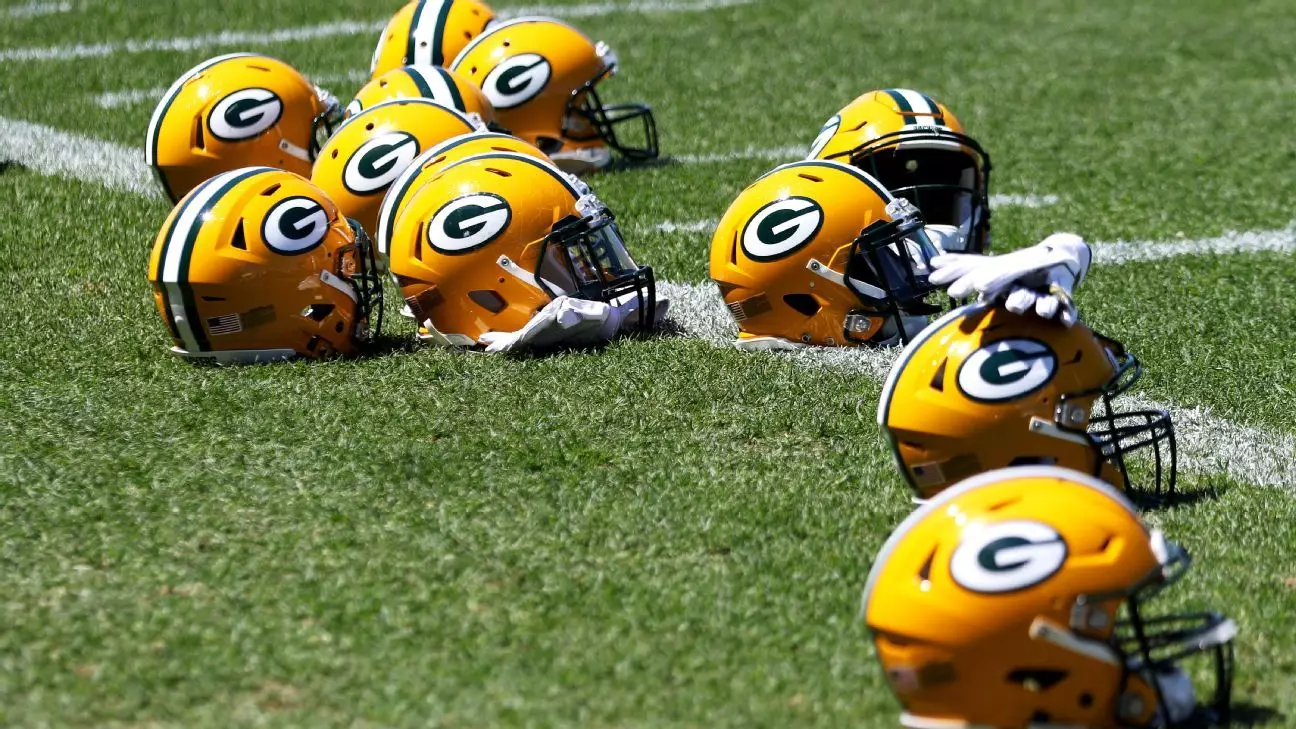Over the past two decades, the financial landscape of the National Football League has undergone a seismic transformation. From modest beginnings—where the average team revenue hovered around $138 million—set against a backdrop of the league’s nascent revenue-sharing model, the NFL now boasts staggering figures, with the Green Bay Packers exemplifying this upward trajectory. The recent revelation that the Packers received over $432 million in national revenue in a single year underscores not just individual team success but highlights the league’s formidable economic expansion. Such growth has been fueled primarily by soaring television deals, innovative streaming ventures, and a rapidly expanding fan base eager to engage with the sport across multiple platforms.
This trend isn’t accidental—it represents a strategic, league-wide effort to diversify revenue streams and solidify the NFL’s position as America’s premier sports league. The league’s focus on increasing broadcast rights, embracing digital streaming, and expanding international markets has paid off immensely. For a team like the Packers—unique in their publicly owned structure—these changes translate into tangible benefits that secure their financial health and community influence. It’s a testament to the league’s ability to adapt, innovate, and maintain relevance in an increasingly competitive entertainment landscape.
The Unique Strength of the Packers’ Community Ownership Model
The Green Bay Packers stand apart from their NFL counterparts due to their distinctive ownership structure. As the only publicly owned franchise, the Packers’ financial disclosures provide invaluable insight into the league’s revenue-sharing mechanisms. With over half a million shareholders holding more than five million shares, the team operates without a single dominant owner, effectively insulating it from the financial and political volatility that sometimes besets privately owned teams.
This community-oriented model emphasizes stability, long-term sustainability, and a deep-rooted identity that transcends individual profit motives. Unlike private owners who might leverage private investments or external funding to increase capital, the Packers rely heavily on their reserves and loyal shareholders. This approach advocates for prudent financial management—evidenced by their growing corporate reserve fund, which recently topped $579 million. This buffer allows the team to make substantial investments, such as the recent $675 million upgrade to Lambeau Field, including a state-of-the-art locker room renovation.
Furthermore, the absence of dividends ensures that the shares are largely a symbol of community pride rather than a vehicle for profit extraction. This structure fosters a sense of shared ownership among residents and fans—a rallying point that remains strongly resonant amid the league’s commercial evolution. The Packers’ financial strength, therefore, is not solely attributable to their revenue streams but also to their unique governance, which prioritizes community engagement over aggressive profit-maximization.
Strategic Financial Management: Building Sustainability in a High-Revenue League
What makes the Packers’ financial success particularly compelling is their disciplined approach to growth and infrastructure investment. Their ability to reinvest earnings into upgrading their facilities without succumbing to external pressure for private investment demonstrates a keen understanding of sustainable development. Despite the league’s emphasis on expanding revenue through broadcast and digital avenues, the Packers remain committed to preserving their community-centric identity.
The increase in local revenue—from around $251 million to nearly $286 million—trickles down from hosting more games and enhancing the game-day experience. The added ninth home game during the 17-game schedule season, for example, built directly into their operations, signifies an awareness of how to leverage the league’s schedule for local benefit. Meanwhile, their financial statement reveals a clear focus on accumulating reserves, which act as a safeguard against unforeseen challenges, and provide a foundation for future investments.
This conservative, strategic financial management set against a backdrop of impressive league-wide growth makes the Packers a model of enduring stability. Their approach exemplifies how a team without a billionaire owner can still thrive in a league often characterized by high-stakes bidding wars for star players and lucrative media deals. It demonstrates that community ownership, combined with disciplined fiscal practices, can form the bedrock of sustained competitive and financial success.
Implications for the Future of the League and Community Sports
The Packers’ financial story isn’t just about numbers—it’s about the enduring power of shared community ownership in a rapidly commercializing sports industry. As the league continues to grow, maintaining this balance between substantial revenue streams and community identity will be crucial. Many teams are now exploring hybrid models or private equity investments to fund stadium renovations and player acquisitions; the Packers show that preserving a community-focused approach is not only possible but can serve as a competitive advantage.
Looking ahead, the team’s financial resilience and innovative infrastructure investments position it well for future challenges and opportunities. As the NFL grapples with issues such as international expansion, digital innovation, and player safety, the Packers’ model offers a blueprint: prioritize community engagement and fiscal prudence, and leverage league growth to benefit stakeholders—and ultimately, the sport itself. This approach highlights a compelling truth: long-term success may depend less on external funding and more on cultivating a loyal, invested community that sees the team as a vital part of its identity.
In the end, the Green Bay Packers’ financial ascent reflects more than just soaring revenue figures; it underscores the enduring strength of community-driven sports organizations in an era of relentless commercialization. They remind us that sustainable growth, rooted in shared values and prudent management, can defy the odds—even in the most competitive and profit-driven industries.

